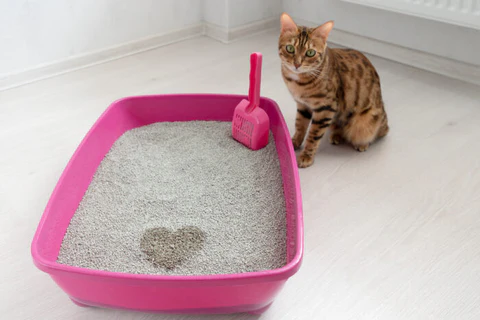
Every cat owner knows the importance of a clean, accessible litter box. Yet, despite our best efforts, some feline friends seem to have their own ideas about where they should, or shouldn’t, relieve themselves. If you’re struggling with a finicky kitty who’s more inclined to use your favorite armchair than the litter box, don’t despair! With the right approach, you can teach your cat to use the litter box every time. This guide will walk you through practical tips, common pitfalls, and some ingenious solutions to ensure your cat sticks to the litter box like a pro.
Why Is Your Cat Avoiding the Litter Box?
Understanding the Problem
Before you can solve the problem, it’s essential to understand why your cat might be avoiding the litter box. Here are some common reasons:
- Medical Issues: Cats might avoid the litter box due to pain or discomfort from medical conditions like urinary tract infections or arthritis.
- Litter Box Aversion: Sometimes, the issue is related to the box itself. Cats are very particular about their bathroom environment.
- Stress and Anxiety: Changes in the household, new pets, or even changes in the litter type can cause stress-induced avoidance.
- Dirty Litter Box: Cats are fastidious creatures who prefer a clean place to do their business.
How to Get Your Cat to Use The Litter Box Every Time
1. Choose the Right Litter Box
Size and Shape Matters
- Size: Ensure the litter box is large enough for your cat to comfortably turn around in. A good rule of thumb is that the box should be at least one and a half times the length of your cat.
- Shape: Some cats prefer open boxes, while others feel more secure in covered ones. Try different shapes to see what your cat prefers.
Location, Location, Location
- Quiet Spot: Place the litter box in a quiet, low-traffic area where your cat can have some privacy.
- Avoiding Food and Water: Keep the litter box away from your cat’s food and water bowls. Cats don’t like to use the bathroom near their eating areas.
2. Select the Right Litter
Types of Litter
- Clumping Litter: Popular for its ease of cleaning and odor control. It forms clumps when wet, making it easy to scoop.
- Non-Clumping Litter: Absorbs moisture but doesn’t form clumps. It may need to be changed more frequently.
- Natural Litter: Made from materials like corn or wheat. It’s biodegradable and often preferred by environmentally conscious cat owners.
Litter Preferences
- Scented vs. Unscented: Some cats are sensitive to strong fragrances. Start with unscented litter to see if your cat prefers it.
- Texture: Cats have different preferences for texture. Experiment with fine-grained or coarse-grained litter to find out what your cat likes.
3. Maintain a Clean Litter Box
Daily Cleaning
- Scoop Regularly: Scoop out clumps of waste at least once a day. This prevents odor build-up and keeps the box inviting.
- Change Litter Frequently: Completely change the litter and clean the box with soap and water once a week.
Dealing with Odor
- Deodorizing: Use litter box deodorizers or baking soda to control smells. Be cautious with strong chemicals as they might deter your cat.
4. Encourage Positive Behavior
Reward System
- Treats and Praise: When your cat uses the litter box, reward them with a treat and praise. Positive reinforcement can help reinforce the desired behavior.
Training Techniques
- Consistent Routine: Feed your cat on a regular schedule and follow a consistent litter box routine. This helps establish a habit.
- Supervision: Keep an eye on your cat during the transition period. If they show signs of needing to go, gently guide them to the box.
5. Addressing Behavioral Issues
Dealing with Stress
- Environmental Enrichment: Provide toys, scratching posts, and interactive play to reduce stress and keep your cat mentally stimulated.
- Calming Products: Consider using pheromone diffusers or calming treats if your cat’s behavior is stress-related.
Medical Concerns
- Vet Check-Up: If your cat’s avoidance persists, consult your veterinarian. They can rule out any medical issues and provide additional guidance.
Common Mistakes to Avoid
Overlooking Box Placement
- Accessibility: Ensure the litter box is easily accessible, especially for older or disabled cats.
Using Too Many Boxes
- Box Quantity: The general rule is one box per cat, plus one extra. However, too many boxes can sometimes confuse your cat.
Not Transitioning Gradually
- Change of Litter: If you need to change the type of litter, do it gradually to avoid confusing your cat. Mix the new litter with the old one until your cat adjusts.
Conclusion
Getting your cat to use the litter box every time might seem like a daunting task, but with patience and the right approach, it’s entirely achievable. By understanding your cat’s preferences, maintaining a clean and accessible litter box, and addressing any underlying issues, you can create a positive litter box experience for your feline friend. Remember, each cat is unique, so it may take some experimentation to find the perfect setup. With these tips, you’ll be well on your way to a happier, cleaner home and a contented kitty who always knows where to go.